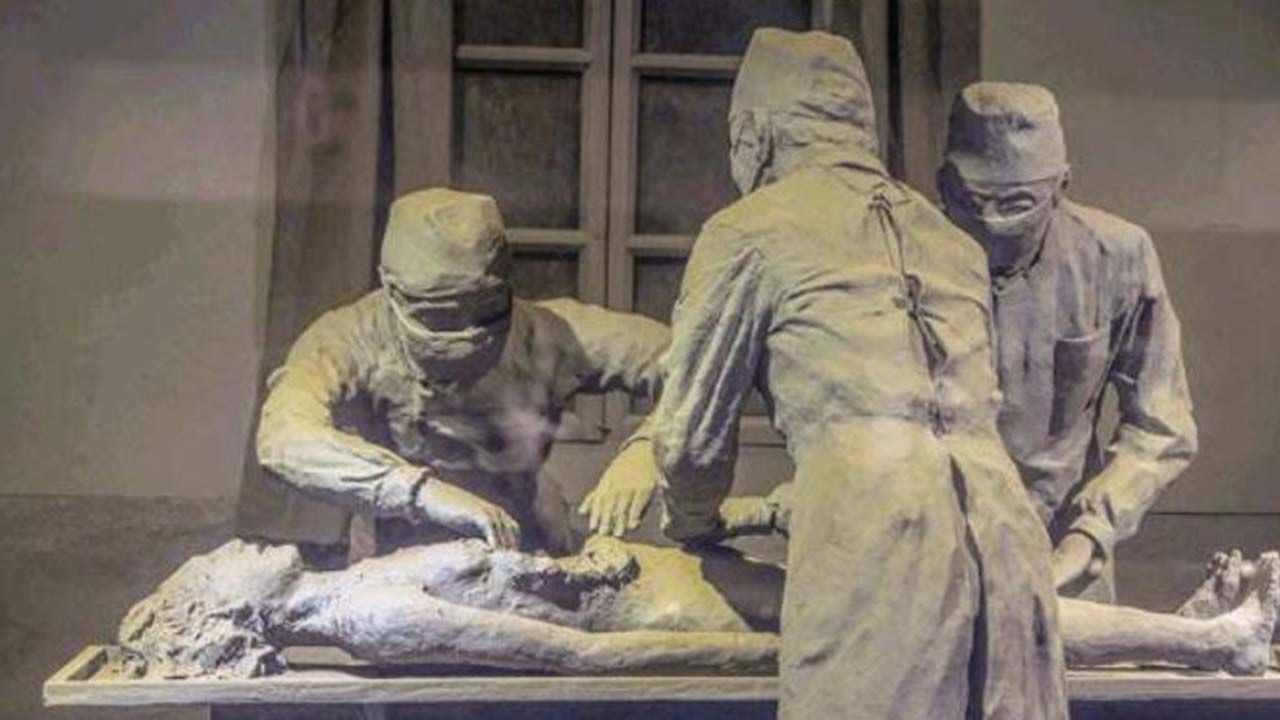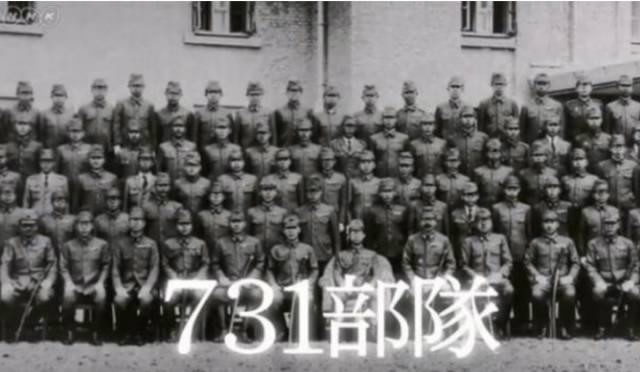
Politics
21:53, 15-Aug-2017
New evidence of Japan's WWII germ warfare revealed
CGTN

Recordings from post-war trials have laid bare the horrific biological research and vivisection on humans conducted by the Japanese army’s notorious Unit 731 in northeast China's Heilongjiang Province during World War II.
The recordings were made public for the first time in a documentary aired by Japan's public broadcaster NHK on Sunday, two days ahead of the 72nd anniversary of Japan's surrender in the war.
"The biggest secret was that we were doing research on germ warfare as a means of attack and vivisection of humans," a medical officer in the Kwantung Army confessed in the documentary, named "The Truth about Unit 731".

A group photo of Unit 731 in the NHK documentary. /NHK Screenshot
A group photo of Unit 731 in the NHK documentary. /NHK Screenshot
Erosive toxicant used on humans
Unit 731 was established in Harbin in 1935, during the Japanese army's occupation of northeast China. More than 3,000 people died there, according to Jin Chengmin, curator of the Museum of Evidence of War Crimes by Japanese Army Unit 731 in Harbin.
Some members of Unit 731 were captured by the Soviet Red Army at the end of the war and appeared in court in the Soviet Union's Far East city of Khabarovsk.
A combat medic of Unit 731 featured in the documentary said erosive toxicant was used in vivisection, adding that he saw people in the detention center with decayed skin on their hands, feet and face.
In late 1943, over 50 Chinese people were forced by Unit 731 personnel to drink "sugar water" containing salmonella to test their vaccines, according to the combat medic.
"I remember 12 or 13 people died in that vivisection," the Japanese veteran said.

Museum of Evidence of War Crimes by Japanese Army Unit 731 in Harbin, Heilongjiang Province in northeast China. /Chinanews.cn Photo
Museum of Evidence of War Crimes by Japanese Army Unit 731 in Harbin, Heilongjiang Province in northeast China. /Chinanews.cn Photo
No anesthesia
According to a report by Nicholas Kristof in The New York Times in 1995, those subjected to vivisection usually died in agony because no anesthesia was used.
In an interview with Kristof, a Japanese farmer who used to be a medical assistant in Unit 731 recalled how he performed vivisection on a 30-year-old man half a century ago.
"I cut him open from the chest to the stomach, and he screamed terribly, and his face was all twisted in agony. He made this unimaginable sound, he was screaming so horribly. But then finally he stopped," he said.
Explaining why anesthesia was not used, the former Unit 731 member said, "If we'd used anesthesia, that might have affected the body organs and blood vessels that we were examining."

Members of an anti-war NGO based in Kobe, Japan attend a peace assembly in Nanjing, east China's Jiangsu Province, August 15, 2017. /Xinhua Photo
Members of an anti-war NGO based in Kobe, Japan attend a peace assembly in Nanjing, east China's Jiangsu Province, August 15, 2017. /Xinhua Photo
Tokyo's denial of atrocities
Between 1937 and 1942, the unit manufactured more than 2,000 germ bombs, loaded with fleas infected with plague bacillus.
However, the Japanese government continues to deny the atrocities, citing lack of historical data.
Commenting on the NHK documentary, Chinese Foreign Ministry spokeswoman Hua Chunying said at a regular press briefing on Tuesday that China appreciates the broadcaster's courage to reveal the truth.
She urged the Japanese government to listen to just appeals at home and abroad, reflect on the history of aggression of Japanese militarism and respect the feelings of people in China and other Asian countries.

SITEMAP
Copyright © 2018 CGTN. Beijing ICP prepared NO.16065310-3
Copyright © 2018 CGTN. Beijing ICP prepared NO.16065310-3